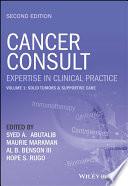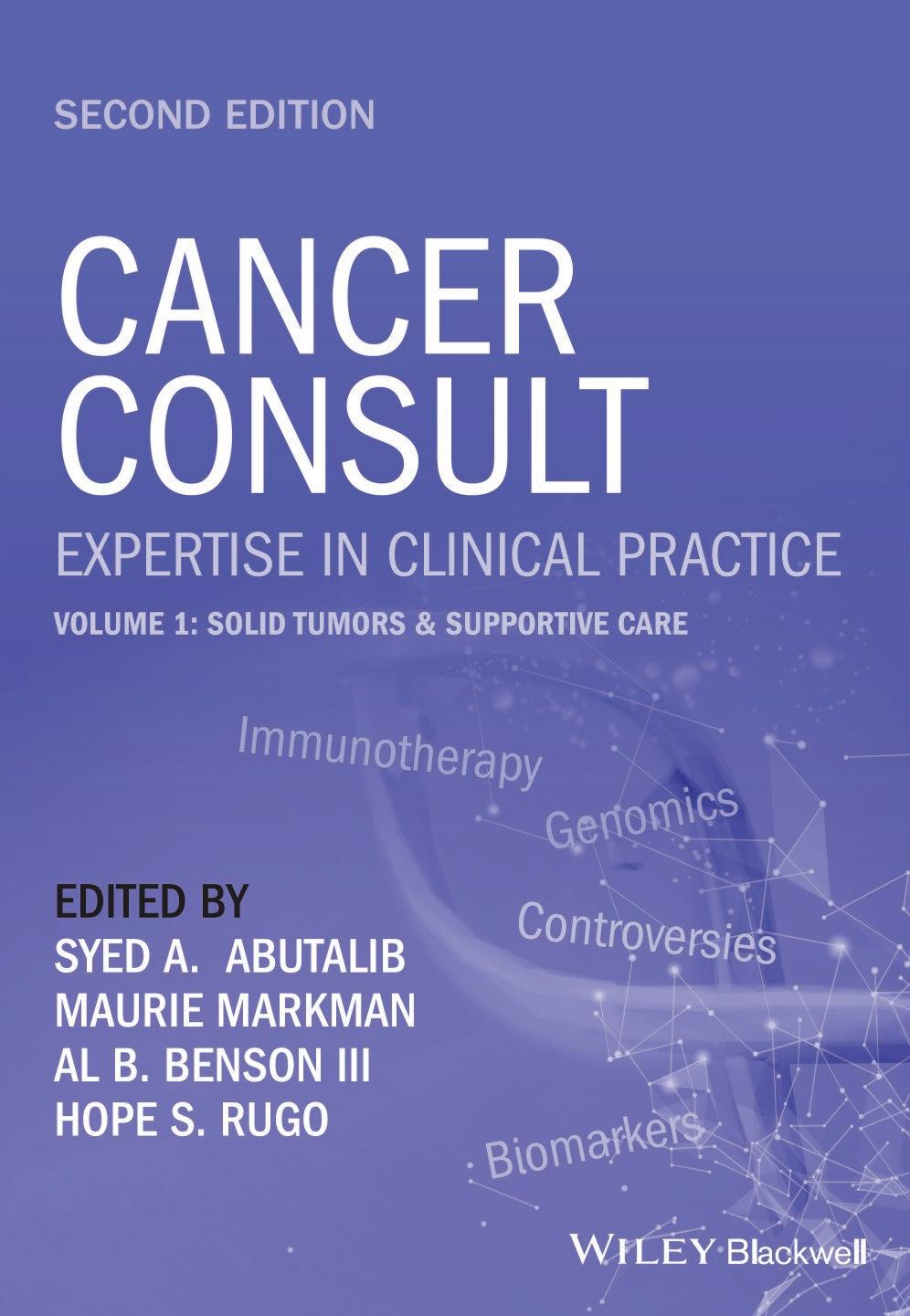https://ebookmass.com/product/cancer-consult-expertise-in-
Nuclear Reactor Physics and Engineering John C. Lee
https://ebookmass.com/product/nuclear-reactor-physics-and-engineeringjohn-c-lee/
ebookmass.com
Financing in Europe: Evolution, Coexistence and Complementarity of Lending Practices from the Middle Ages to Modern Times 1st Edition Marcella Lorenzini
https://ebookmass.com/product/financing-in-europe-evolutioncoexistence-and-complementarity-of-lending-practices-from-the-middleages-to-modern-times-1st-edition-marcella-lorenzini/ ebookmass.com
Sing Her Down Ivy Pochoda
https://ebookmass.com/product/sing-her-down-ivy-pochoda/
ebookmass.com
The SBE Broadcast Engineering Handbook: A Hands-on Guide to Station Design and Maintenance Jerry C. Whitaker
https://ebookmass.com/product/the-sbe-broadcast-engineering-handbooka-hands-on-guide-to-station-design-and-maintenance-jerry-c-whitaker/ ebookmass.com
Kinesiology of the Musculoskeletal System u2013 E-Book: Foundations for Rehabilitation
https://ebookmass.com/product/kinesiology-of-the-musculoskeletalsystem-e-book-foundations-for-rehabilitation/ ebookmass.com
Cancer Consult
Expertise in Clinical Practice, Second Edition.
Volume 1: Solid Tumors & Supportive Care
Edited by
Syed A. Abutalib, Maurie Markman, Al B. Benson III, and Hope S. Rugo
This second edition first published 2024 © 2024 John Wiley & Sons Ltd
Edition History
Cancer Consult: Expertise for Clinical Practice, John Wiley and Sons, Inc. (2014)
All rights reserved. No part of this publication may be reproduced, stored in a retrieval system, or transmitted, in any form or by any means, electronic, mechanical, photocopying, recording or otherwise, except as permitted by law. Advice on how to obtain permission to reuse material from this title is available at http://www.wiley.com/ go/permissions.
The right of Syed A. Abutalib, Maurie Markman, Al B. Benson III and Hope S. Rugo to be identified as the authors of the editorial material in this work has been asserted in accordance with law.
Registered Offices
John Wiley & Sons, Inc., 111 River Street, Hoboken, NJ 07030, USA
John Wiley & Sons Ltd, The Atrium, Southern Gate, Chichester, West Sussex, PO19 8SQ, UK
Editorial Office
The Atrium, Southern Gate, Chichester, West Sussex, PO19 8SQ, UK
For details of our global editorial offices, customer services, and more information about Wiley products visit us at www.wiley.com.
Wiley also publishes its books in a variety of electronic formats and by print-on-demand. Some content that appears in standard print versions of this book may not be available in other formats.
Trademarks: Wiley and the Wiley logo are trademarks or registered trademarks of John Wiley & Sons, Inc. and/or its affiliates in the United States and other countries and may not be used without written permission. All other trademarks are the property of their respective owners. John Wiley & Sons, Inc. is not associated with any product or vendor mentioned in this book.
Limit of Liability/Disclaimer of Warranty
The contents of this work are intended to further general scientific research, understanding, and discussion only and are not intended and should not be relied upon as recommending or promoting scientific method, diagnosis, or treatment by physicians for any particular patient. In view of ongoing research, equipment modifications, changes in governmental regulations, and the constant flow of information relating to the use of medicines, equipment, and devices, the reader is urged to review and evaluate the information provided in the package insert or instructions for each medicine, equipment, or device for, among other things, any changes in the instructions or indication of usage and for added warnings and precautions. While the publisher and authors have used their best efforts in preparing this work, they make no representations or warranties with respect to the accuracy or completeness of the contents of this work and specifically disclaim all warranties, including without limitation any implied warranties of merchantability or fitness for a particular purpose. No warranty may be created or extended by sales representatives, written sales materials or promotional statements for this work. The fact that an organization, website, or product is referred to in this work as a citation and/or potential source of further information does not mean that the publisher and authors endorse the information or services the organization, website, or product may provide or recommendations it may make. This work is sold with the understanding that the publisher is not engaged in rendering professional services. The advice and strategies contained herein may not be suitable for your situation. You should consult with a specialist where appropriate. Further, readers should be aware that websites listed in this work may have changed or disappeared between when this work was written and when it is read. Neither the publisher nor authors shall be liable for any loss of profit or any other commercial damages, including but not limited to special, incidental, consequential, or other damages.
Library of Congress Cataloging-in-Publication Data
Names: Abutalib, Syed A., editor. | Markman, Maurie, editor.
Title: Cancer consult : expertise in clinical practice. Volume 1, Solid tumors & supportive care / edited by Syed A. Abutalib, Maurie Markman, Al B. Benson and Hope S. Rugo.
Description: Second edition. | Hokoben, NJ : John Wiley & Sons Ltd., 2023. | Includes bibliographical references.
Identifiers: LCCN 2023024465 | ISBN 9781119823735 (paperback) | ISBN 9781119823742 (pdf) | ISBN 9781119823759 (epub) | ISBN 9781119823766 (ebook)
Subjects: LCSH: Tumors--Treatment--Examinations, questions, etc.
Classification: LCC RC256 .C36 2023 | DDC 616.99/40076--dc23/eng/20230623
LC record available at https://lccn.loc.gov/2023024465
Cover image: © Kotkoa/Shutterstock
Cover design by Wiley
Set in 9.5/12.5pt STIXTwoText by Integra Software Services Pvt. Ltd, Pondicherry, India
Editors Volume 1 xi
Volume 2: Neoplastic Hematology & Cellular Therapy
Editors xii
Editor’s Biography xiii
Preface xv
Acknowledgment xvii
Emrullah Yilmaz and Jessica L. Geiger
Kartik Sehgal and Jochen H. Lorch
5 Non-Small Cell Lung Cancer: Screening, Staging, and Stage I 51
Ryan D. Gentzler and Linda W. Martin
6 Non-Small Cell Lung Cancer: Stages II and III 63
Gregory Peter Kalemkerian, Kamya Sankar, and Angel Qin
7 Recurrent and Metastatic Non-Small Cell Lung Cancer 79
Julia Judd, J. Nicholas Bodor, and Hossein Borghaei
8 Small Cell Lung Cancer 97
Jyoti D. Patel and Husam Hafzah
Geoffrey
22 Early-Stage Colon Cancer 255
John Krauss, Vaibhav Sahai, and Al B. Benson III
23 Early-Stage Rectal Cancer 267
Hannah J. Roberts, Theodore Hong, and Aparna Parikh
24 Recurrent and Metastatic Colorectal Cancer 283
Joseph Heng and Blase Polite
25 Pancreatic Adenocarcinoma 291
Evan Walker, Andrew Ko, and Margaret Tempero
26 Hepatocellular Cancer 309
Pedro Luiz Serrano Uson Junior and Mitesh Borad
27 Biliary Tract Cancers 319
David B. Zhen and Vaibhav Sahai
28 Carcinoid and Neuroendocrine Tumors 327
Mintallah Haider and Jonathan Strosberg
29 Anal Cancer 343
Asad Mahmood and Rob Glynne-Jones
Part 5 Genitourinary Cancers 359
30 Renal Cancer 361
James L. Coggan, Alan Tan, and Timothy M. Kuzel
31 Bladder Cancer 375
Revathi Kollipara, Alan Tan, and Timothy M. Kuzel
32 Prostate Cancer: Screening, Surveillance, Prognostic Algorithms, and Independent Pathologic Predictive Parameters 389
Eduardo Benzi and Thomas M. Wheeler
33 Early and Locally Advanced Prostate Cancer 399
James Randall, Mohammad R. Siddiqui, Ashley Ross, and Sean Sachdev
34 Metastatic Prostate Cancer 421
Priyanka Chablani, Natalie Reizine, and Walter Stadler
35 Germ Cell Tumors 437
Hamid Emamekhoo, Syed A. Abutalib, and Timothy Gilligan
Part 10 Special Issues in Oncology 637
48 Cancer of Unknown Primary 639
Tony Greco
49 Anticoagulation in Cancer 651
Jean Marie Connors
50 Identification and Management of Immunotherapy-Related Adverse Events in Oncology 663
Ozge Gumusay, Laura A. Huppert, Dame Idossa, and Hope S. Rugo
51 Geriatric Oncology 677
Sukeshi Patel Arora and Efrat Dotan
52 Palliative Medicine for Curable and Terminal Cancers 693
Isabelle Blanchard, Kavitha Jennifer Ramachandran, and Divya Gupta
Index 709
Volume 2: Neoplastic Hematology & Cellular Therapy
Editors
Syed Ali Abutalib, MD
Medical Director
Hematologic Malignancies and Transplantation and Cellular Therapy
Aurora St. Luke’s Medical Center
Advocate Aurora Health Care Milwaukee, Wisconsin
Maurie Markman, MD
Professor, Department of Medical Oncology and Therapeutics Research City of Hope
President, Medicine & Science, City of Hope, Atlanta, Chicago, and Phoenix
Kenneth C. Anderson, MD
Program Director, Jerome Lipper Multiple Myeloma Center and LeBow Institute for Myeloma Therapeutics
Kraft Family Professor of Medicine
Harvard Medical School
Dana Farber Cancer Institute, Boston, MA
James O. Armitage, MD
Joe Shapiro Professor of Medicine, University of Nebraska Medical Center Omaha, NE

Al B. Benson III, M.D FACP FASCO is a Professor of Medicine in the Division of Hematology/Oncology at Northwestern University’s Feinberg School of Medicine in Chicago, Illinois, and the Associate Director for Cooperative Groups at the Robert H. Lurie Comprehensive Cancer Center. He is a recipient of the American Society of Clinical Oncology (ASCO) Statesman Award (Fellow of ASCO) and has served on a number of ASCO committees, often as chair or co-chair. Dr Benson is currently Vice-Chair of the ECOGACRIN Cancer Research Group, past Chair of the ECOGACRIN Gastrointestinal Committee, Co-Chair of Cancer Care Delivery Research Committee, a member of the NCI Rectal/Anal Task Force and Co-Chair of the International Rare Cancers Initiative (IRCI), Anal Cancers Committee. In addition, he is a Past President of the Illinois Medical Oncology Society, Past President of the Association of Community Cancer Centers (ACCC), a board member and past-Chair of the Board of Directors of the National Comprehensive Cancer Network (NCCN) and the past President of the National Patient Advocate Foundation. Dr. Benson has published extensively in the areas of gastrointestinal cancer clinical trials, health services research and cancer treatment guidelines.

Hope S. Rugo, MD, FASCO, is Director of Breast Oncology and Clinical Trials Education and a Professor of Medicine at the University of California San Francisco Comprehensive Cancer Center. Dr. Rugo is an internationally well-known medical oncologist specializing in breast cancer research and treatment. She entered the field of breast cancer in order to incorporate novel therapies with excellent quality of care into the treatment of breast cancer and is a principal investigator of multiple clinical trials focusing on novel targeted therapeutics to improve the treatment of breast cancer. Her research interests include immunotherapy and combinations of targeted agents to treat breast cancer, and management of toxicity. She is co-chair of the Safety Committee for the multicenter adaptively randomized phase II I-SPY2 trial, co-chair of the Triple Negative Working Group of the Translational Breast Cancer Research Consortium (TBCRC) and a member of the Alliance breast committee. Dr. Rugo is an active clinician committed to education.
Preface
Over the past decade there have been tremendous advances in the oncology arena resulting in both improved survival and quality of life for individuals requiring management of a malignant disease. However, this surge in available therapeutic options has quite often resulted in increased complexity of care. As a result, patients frequently request a “second opinion.”
It is also commonplace for oncologists to discuss with a colleague a difficult or unusual case, or the management of a patient who presents with serious comorbidities, to insure that the individual is given the greatest opportunity to experience the benefits of therapy while minimizing the risks of possible treatment- related harm. Such discussions occur both within a particular specialty (e.g., surgery, radiation, or medical oncology) and between various specialties.
Further, as cancer management becomes more multimodal in nature, with an increasing focus on maximizing the opportunity for extended survival and at the same time optimizing quality of life, the requirement for essential communication between individual specialists with their own unique knowledge and experience of critically relevant components of care becomes ever more important.
It is with these thoughts in mind that the editors conceived of an oncology text that would focus on the “Expert Perspectives” of oncology professionals. The intent of this distinctive effort is to have each individual chapter be viewed as a “miniconsultation” provided by a specialist regarding a specific, highly clinically relevant issue in cancer management.
Considering the specific purpose and focus of the material presented, the book is written without detailed references (although “Recommended Readings” are included at the end of each chapter). However, many of the authors have prepared a more extensive reference list, and the editors will be happy to email any reader the more detailed reference lists for individual book chapters, if so requested.
The chapters that follow have been written by clinicians selected for their recognized clinical expertise and experience. It is hoped that those reading this book will find the material of value in their own interactions with their patients.
Syed A. Abutalib, Maurie Markman, Al B. Benson III, and Hope S. Rugo
Part 1
Central Nervous System
Brain and spinal cord tumors are graded from 1 to 4, where the higher numbers indicate faster growth and/or greater aggressiveness. Each tumor type has its own grading that represents its historically determined natural history but does not necessarily correlate with prognosis in this current era. For example, the five-year survival of a grade 3 meningioma is 64%, whereas almost all patients with a grade 4 WNT-activated medulloblastoma have long-term survival if treatment is provided. In recent years, molecular biomarkers became an important part of clinical care in neuro-oncology because they have promoted better categorization of CNS tumors. Consequently, the 2021 WHO classification enhances the use of molecular biomarkers to influence grading in many tumor types due to their powerful prognostic value. In addition, molecular biomarkers also have the potential to influence treatment in some cases. Imminent advances in molecular diagnostics are expected to further evolve the landscape of neuro-oncology soon.
2. What is the incidence of primary brain cancers?
Expert Perspective: Although CNS tumors (including malignant and non-malignant etiology) are the most common solid tumor types in children below age 14, they are less frequent in adults. Brain tumors are the 3rd most common tumor types in people between the ages of 15 and 39 with an average annual age-adjusted incidence rate of 11.54 per 100,000 population, and the 8th most common tumor type above age 40 with an average annual age-adjusted incidence rate of 42.85 per 100,000 population. In adults, 70.3% of brain tumors are non-malignant, and among them, meningioma is the most common tumor type (Table 1.1). Regarding adult malignant tumors, glioblastoma leads in frequency because it represents 14.5% of all brain tumors and 48.6% of malignant brain cancers. Malignant brain cancers are more prevalent in males than females (56% vs 44%, respectively). Gender differences are reversed in non-malignant cancers, where 36% of the cases occurred in males and 64% in females. Incidence rates for malignant primary brain tumors are highest in Whites (7.58 per 100,000), but non-malignant primary brain tumors are more common in Blacks (19.45 per 100,000) (Ostrom et al. 2020).
3. Do primary brain cancers have genetic predisposition?
Expert Perspective: Most adult primary brain tumors occur sporadically without an identifiable genetic predisposition. However, genetic susceptibility to brain cancers is suggested by tumor aggregation in families, genetic cancer syndromes, linkage analyses, and lymphocyte
Table 1.1 Molecular characteristics and grading of the most frequently occurring CNS tumors in adults.
mutagen sensitivity. Thorough medical history taking with close attention to the family cancer history can reveal family cancer clusters and/or raise suspicion for a genetic syndrome associated with brain cancers. The most common genetic conditions associated with primary CNS tumors include Lynch syndrome, neurofibromatosis type 1, Li-Fraumeni syndrome, tuberous sclerosis (Table 1.2). In addition to colorectal cancer, endometrial cancer, upper urinary tract cancer, and ovarian cancer, patients with Lynch syndrome are at high risk of developing gliomas in their fifth decade. Patients with neurofibromatosis type 1 can develop optic pathway tumors in childhood and/or glioblastoma, as well as malignant peripheral nerve sheath tumors in early adulthood. They are also more prone to be diagnosed with breast cancer, endocrine cancers, sarcoma, melanoma, ovarian cancer, and prostate cancer. Patients with Li-Fraumeni syndrome can also develop multiple cancers, including solid tumors (breast cancer, osteosarcoma, sarcoma, and adrenocortical cancer), hematologic malignancies (leukemia), and CNS tumors (choroid plexus tumor in infancy, medulloblastoma in childhood, and high-grade glioma in early adulthood). Patients with tuberous sclerosis may develop subependymal giant-cell astrocytomas before age 25 in addition to other solid tumors (like rhabdomyoma and kidney cancer). Recognizing a genetic syndrome based on clinical signs and genetic markers is crucial to provide appropriate medical management. The identification of a genetic syndrome may influence the treatment plan because targeted therapy has been increasingly accessible for specific mutations. In addition to that, it may also guide future cancer surveillance and the need for family cancer screening. (See Chapters 45–47.)
Table 1.2 Characteristics of the most common genetic conditions associated with primary central nervous system tumors. Name
Lynch syndrome Estimated 1 in 279 Multiple chromosomes, including chromosomes 2, 3, and 7
Neurofibromatosis type 1 1 in 3,000–4,000
MLH1, MSH2, MSH6, PMS2, EPCAM
Glioblastoma, astrocytoma, oligodendroglioma, medulloblastoma
Chromosome 17 NF1/ neurofibromin Plexiform neurofibroma, optic pathway tumors, glioblastoma, malignant peripheral nerve sheath tumors
Colon, endometrial, upper urinary tract, ovarian
Breast, endocrine, sarcoma, melanoma, ovarian, prostate
Li-Fraumeni syndrome 1 in 5,000–20,000
Chromosome 17 TP53/p53 Choroid plexus tumor, medulloblastoma, high-grade glioma
Tuberous sclerosis Estimated 1 in 6,000–18,000 Chromosomes 9 and 16
TS1, TS2
Subependymal giant-cell astrocytoma
Breast, osteosarcoma, sarcoma, leukemia, adrenocortical
Rhabdomyomas, kidney
Slow-growing asymptomatic tumors that do not invade or compromise healthy tissue can be monitored with periodic MRIs. Imaging should be repeated at three, six and twelve months after the diagnosis, then every 6–12 months for five years, followed by every one to three years thereafter. To determine tumor growth rate, imaging should be always compared to the first MRI. For large and symptomatic meningiomas, surgery is preferred if the location is accessible. For patients with unresectable meningioma, radiation treatment can be an effective alternative. Surgery followed by radiation therapy can be considered for grade 2 meningiomas, but prospective randomized trials comparing observation with radiation after resection are not yet completed. In contrast, radiation treatment is required for grade 3 meningiomas due to their high recurrence rates.
Increasing evidence supports the value of molecular sequencing of meningiomas, too. In addition to the undebatable role of the NF2 gene mutation in the development of meningiomas, the prognostic significance of other genetic alternations has been recognized in recent years. Based on the new 2021 WHO classification, a histologically grade 1 meningioma can be upgraded to grade 3 in the integrated reporting system if it harbors a TERT promoter mutation and/or homozygous deletion of CDKN2A/B. Therefore, molecular characterization of a meningioma is critical for the accurate tissue diagnosis and for the selection of appropriate treatment. In addition, molecular advances not only contribute to better characterization of specific tumor samples but may also contribute to the development of targeted therapy and better patient outcome in the near future.
6. What is the standard of care treatment of oligodendroglioma?
Expert Perspective: The diagnostic criteria have changed in the last few decades, and the 2021 WHO classification guideline categorizes tumors with mutation in the isocitrate dehydrogenase gene (IDH mutation) and combined whole-arm losses of 1p and 19q (1p/19q codeletion) as oligodendroglioma. This clear separation from other gliomas were needed due to the distinct pathology, molecular pathogenesis, treatment response, and prognosis of oligodendrogliomas. They are grouped into two grades based on their histological and molecular characteristics.
Grade 2 oligodendrogliomas are low-grade tumors. They have low mitotic activity and grow slowly, often for years prior to diagnosis. Molecular sequencing reveals no ATRX mutation but shows TERT promoter mutations. Grade 3 oligodendrogliomas, used to be called anaplastic oligodendrogliomas, are malignant tumors with atypical features including high cell density, increased mitotic rate, nuclear atypia, microvascular proliferation, and necrosis, but they also lack ATRX mutation and they harbor TERT promoter mutations. Patients with grade 3 oligodendroglioma have worse prognosis compared with patients with grade 2 tumors. There is some evidence that oligodendrogliomas start at low grade and ultimately evolve into more aggressive tumors, although this progression can’t always be detected because some patients are diagnosed with high-grade tumors at presentation.
Oligodendroglioma treatment should include maximal safe resection followed by additional treatment, which can include radiotherapy and chemotherapy at some point in the course of disease. Because the clear classification of oligodendroglioma is recent, prior clinical studies provide data on the treatment of oligodendroglioma mixed with other tumor types, like astrocytoma (per current classification). The most notable studies include RTOG 9802 for grade 2 tumors and RTOG 9402 and EORTC 269521 for grade 3 tumors. In










